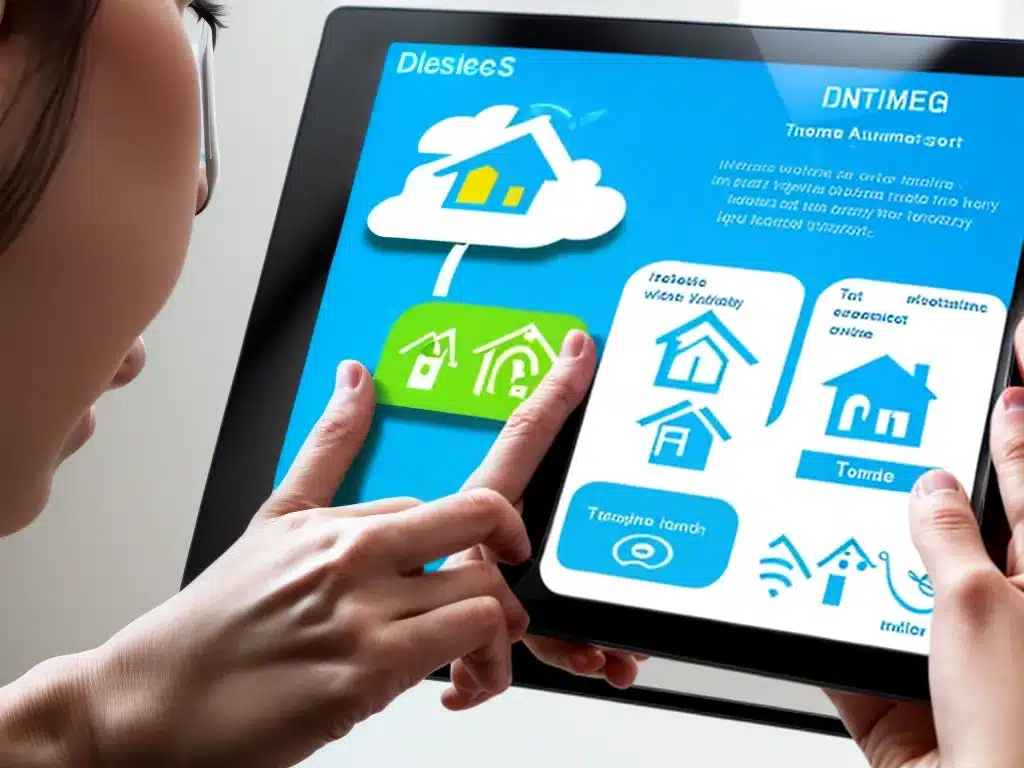
IoT Home Automation: The End of Household Chores?
Introduction
Home automation using Internet of Things (IoT) devices offers an enticing vision of the future – one where mundane household chores and tasks can be easily automated and completed with little to no human effort. As smart home devices like Alexa and Google Home become more ubiquitous and affordable, the dream of living in an automated, voice-controlled home seems within reach for many. However, the reality is more nuanced. In this article, I will explore the current state and future potential of IoT home automation, while also discussing its limitations. Key questions I aim to address include:
- What are the most impactful current uses of home automation?
- What future developments seem most promising?
- Is the “end of chores” vision realistic or overly optimistic?
- What challenges and concerns remain for home automation?
Current Automation Capabilities
Many people already use simple home automation, often without even realizing it. Examples include:
Smart Lighting
- Connected lightbulbs like Philips Hue can be controlled and programmed via smartphone apps. This allows for scheduling lights to turn on/off when you are away from home, automating routines to suit schedules, and setting lighting scenes and colors to match activities or moods.
Smart Appliances
- Many new home appliances like refrigerators, ovens and washing machines can connect to Wi-Fi and be controlled via apps. Key features include remote start/monitoring, maintenance alerts and integration with voice assistants.
Smart Thermostats
- Leading smart thermostat models like the Google Nest adapt to your schedule and presence to optimize heating/cooling. This can generate significant energy savings compared to standard programmable thermostats.
Voice Assistants
- Smart speakers like the Amazon Echo with Alexa allow basic voice control of appliances, lights, and other IoT devices. More advanced integrations also allow conversational commands for tasks like playing music.
The Future: Pushing the Limits
Looking ahead, four exciting frontiers could push home automation into transformative new territory:
Robotics
- Advances in robotics could eventually lead to domestic robots capable of comprehensively automating household chores. Companies like iRobot already offer robovacs, but more generalized and advanced robots remain further off.
Predictive Maintenance
- As more appliances get connectivity, predictive maintenance based on real-time performance data will become possible. Your fridge might tell you it’s about to fail or autonomously schedule repairs.
Seamless Interoperability
- Fragmentation between devices, ecosystems and protocols hampers IoT. Universal standards will be needed for truly seamless integration. Early attempts like Amazon Sidewalk point to progress.
Contextual Personalization
- Truly smart automation requires understanding behavioral context and personal preferences. With advances in AI and voice interaction, homes could proactively tend to needs and habits.
Evaluating the “End of Chores” Vision
Given the rapid pace of technological change, it’s tempting to boldly predict the imminent “end of chores” as automation proliferates. However, this vision deserves critical examination. Several factors suggest more measured expectations are prudent:
- Cost barriers – Sophisticated home automation remains expensive, limiting widespread adoption especially among lower-income demographics. This may perpetuate a digital divide.
- Security risks – Connected devices introduce new data privacy and hacking vulnerabilities. Poorly secured IoT ecosystems could expose users to surveillance or cyberattacks.
- User disengagement – Heavily automated homes might lead to deskilling and passivity among users. People could lose basic competencies required for self-sufficiency.
- Glaring limitations – Even advanced AI and robotics will struggle to match humans at physical dexterity, improvisation and subjective judgment needed for chores.
Key Challenges and Concerns
While home automation will continue advancing, widespread realization of its most transformative possibilities faces hurdles including:
Difficult Technical Problems
- Tasks like laundry involve advanced perception and manipulation challenges beyond current robotics.
Privacy and Security
- Data collection/retention and vulnerabilities in connected devices risk compromising user privacy and safety.
Negative Societal Impacts
- Decreased self-reliance and reduced employment prospects in sectors like housecleaning are possible downsides.
Prohibitive Cost
- Whole-home automation remains accessible mainly to affluent early adopters. Changing this equation will be key for mainstream adoption.
Conclusion
In summary, IoT home automation is an exciting frontier with significant promise to enhance convenience, efficiency, accessibility and quality of life. Impressive progress is happening around capabilities like smart lighting, appliances, voice control and energy management. However, the more transformative vision of wholly eliminating domestic chores remains aspirational. Technical limitations, high costs and other challenges prevent realization of this vision in the near future. Home automation will likely involve a gradual, fragmented evolution encompassing both simplification of chores in some areas and new complexities in others. Rather than the “end”, people can expect it to reshape the chore experience. But some tedious work will persist, and new skills required, keeping humans firmly in the loop.












